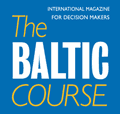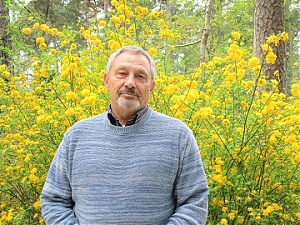
All rights reserved.
You may not copy, reproduce, republish, or otherwise use www.baltic-course.com content
in any way except for your own personal, non-commercial use.
Any other use of content requires the hyperlink to www.baltic-course.com.

Printed: 18.04.2024.
 PrintSDGs in the EU: monitoring progress
PrintSDGs in the EU: monitoring progress
 |
|---|
At the end of 2015, about two hundred states including the
EU and its member states signed up to the 17 Sustainable Development Goals
(SDGs), which aimed at safeguarding the natural environment, mitigating climate
change and secure economic progress. However, the SDGs are complex issues and
the states have to be more active in implementing SDGs.
The outmost goal of sustainable development as a concept is to
achieve a continuous improvement in citizens’ quality of life; the task that involves
the pursuit of economic progress, while safeguarding the natural environment
and promoting social justice. For these reasons, sustainable development is the
EU’s fundamental and overarching objective; thus, the progress towards the
global SDGs goals shall be regularly monitored and reported.
Source: Eurostat monitoring report 105/2019, 28 June 2019
in: https://ec.europa.eu/eurostat/documents/
Global and European pictures
According to the Eurostat calculation, there are two main
“levels of progress: strongest and moderate.
The EU states made strongest
progress - after adoption of the EU SDG implementation plan - towards
achievements of the following SDGs:
- in SDG 3 “good health and well-being”,
followed by SDG 1 “no poverty” and SDG 8 “decent work and economic growth”.
Top positions in the SDGs implementation on the European
level are three Nordic States: Denmark with good accounts on eight SDGs -
1,4,6,7,10,11,15 and 16; Finland with SDGs 1,4,6,7,9,10,15,16 and Sweden with
ten SDGs – 1,3,4,5,6,7,8,11,15 and 16.
- For nine SDGs, the EU states made overall moderate progress; some moderate trends have been visible in the SDG 4 “quality education”, SDG 11 “sustainable cities and communities”,
SDG 17 “partnership for the goals”, SDG 2 “zero hunger”, SDG 5 “gender equality”,
SDG 10 “reduced inequalities”, SDG 7 “affordable and clean energy”, SDG 12 “responsible
consumption and production” and SDG
15 “life on land”.
More in: Book
review “World-wide sustainability policy framework: European approach”
Sustainable development in the European Union. Monitoring report on progress towards the
SDGs in an EU context/2017 edition. - Eurostat Publ., November 2017,- 372pp. 15.01.2018.
In: http://www.baltic-course.com/eng/book_review/?doc=136778&ins_print
Three Baltic States have quite a weak position in implementing
SDGs: Estonia with four SDGs -3, 8, 15 and 16; Latvia with two SDGs -8 and 16;
and Lithuania with three SDGs -4, 8 and 16.
Two goals: SDG 13 “climate
action” and SDG 9 “industry,
innovation and infrastructure” are characterized by mixed positive and negative
developments in implementation.
It is quite remarkable that SDG 8 “decent work and economic growth” has been the “common
denominator” among the Baltic States, while in the top Nordic group, this goal
was mentioned only in Sweden; are Denmark and Sweden having “less growth”, or they
regard their development not sufficiently sustainable?
In the case of three goals – SDG 6 “clean water and sanitation”, SDG 14 “life below water” and SDG
16 “peace, justice and strong institutions” – European trends cannot be
calculated due to insufficient data during past years.
More in “Overview of progress”: https://ec.europa.eu/eurostat/web/products-catalogues/-/KS-02-19-166?msg=mailSent
Global trends in implementing SDGs can be traced in the
following web-links:
https://www.sdgindex.org/
and https://spark.adobe.com/page/ipileuVKKZCmu/
Complexity in implementation
Sustainable development is often seen as both complex and
simple issue: on one side, it is about making sure that economic growth allows maintaining
a production model which has a fair outcome for all citizens; on another hand,
it is about ensuring that humans don’t consume more resources than are
available. That means modernise existing economy’s models to embrace
sustainable consumption and production patterns, to correct the imbalances in
food system and mobility, energy production and use energy, designing buildings
in a sustainable way.
To accomplish these tasks, the governments need to take
resolute actions with the help of modern science, financing initiatives,
taxation, etc.
Some EU researchers’ examples:
- Battery technologies are vital
means in reducing CO2 emissions and for mitigating human impact on climate
change. Developing the ultra-performing, safe and sustainable batteries of the
future is the target of the EU’s “Battery 2030+” initiative.
- As part of the efforts to reduce the carbon-footprint, the
EU study on “Energy-efficient Cloud Computing Technologies and Policies for an
Eco-friendly Cloud Market” aims at developing a roadmap for research and
development for green digital services (Green ICT). It is also investigating
policy options for driving the market towards procuring and offering
energy-efficient ICT services.
More on Green ICT: https://ec.europa.eu/digital-single-market/en/news/energy-efficient-cloud-computing-and-green-digital-services
Main “working agendas” for SDGs implementation
In order to implement SDGs in the member states, the European
Commission follow the principle of subsidiarity. Thus, there
are two working agendas: first, to
include the SDGs in the countries’ policy framework and current priorities; second, to conduct a reflection
on developing longer term vision and sectoral policies for the SDGs implementation.
Sustainable development requires a holistic and cross-sector
policy approach to ensure that economic, social and environmental challenges
are addressed together. This approach is an important instrument that
facilitates a more concerted and mutually-reinforcing SDGs implementation. The states
shall include sustainable development in all policies, and using tools like
impact assessments to evaluate environmental, social and economic impacts so
that sustainability is duly considered and evaluated.
It is essential to keep track of progress in a systematic
and transparent way. Thus, the EU, in coordination with the states, is
committed to playing an active role at each level, to maximize progress towards
the SDGs and to ensure accountability to citizens.
The UN Statistical Commission agreed, in March 2016, an
indicator framework comprising 230 indicators as a practical starting point for
global monitoring. EU requires at a national level to put in place
systems for measuring progress and reporting on sustainable development goals.
From 2017 onwards, the Commission carries out more detailed
regular monitoring of the sustainable development goals in the states,
developing a reference indicator framework for this purpose and drawing on the
wide range of ongoing monitoring and assessment methods.
Sustainable development has been at the heart of European
policy for a long time. The 2030 Agenda for Sustainable Development and its 17
Sustainable Development Goals (SDGs), adopted by the UN General Assembly in October
2015, have given a new impetus to the European efforts to achieve sustainable
development. The EU has fully committed to delivering on the 2030 Agenda, as
outlined in the reflection paper ‘Towards a Sustainable Europe by 2030’*).
Regular monitoring of progress towards the SDGs both in the EU
context and in the member states is essential for this purpose.
*) More in a reflection paper “Towards Sustainable Europe by
2030”: https://ec.europa.eu/commission/sites/beta-political/files/rp_sustainable_europe_30-01_en_web.pdf